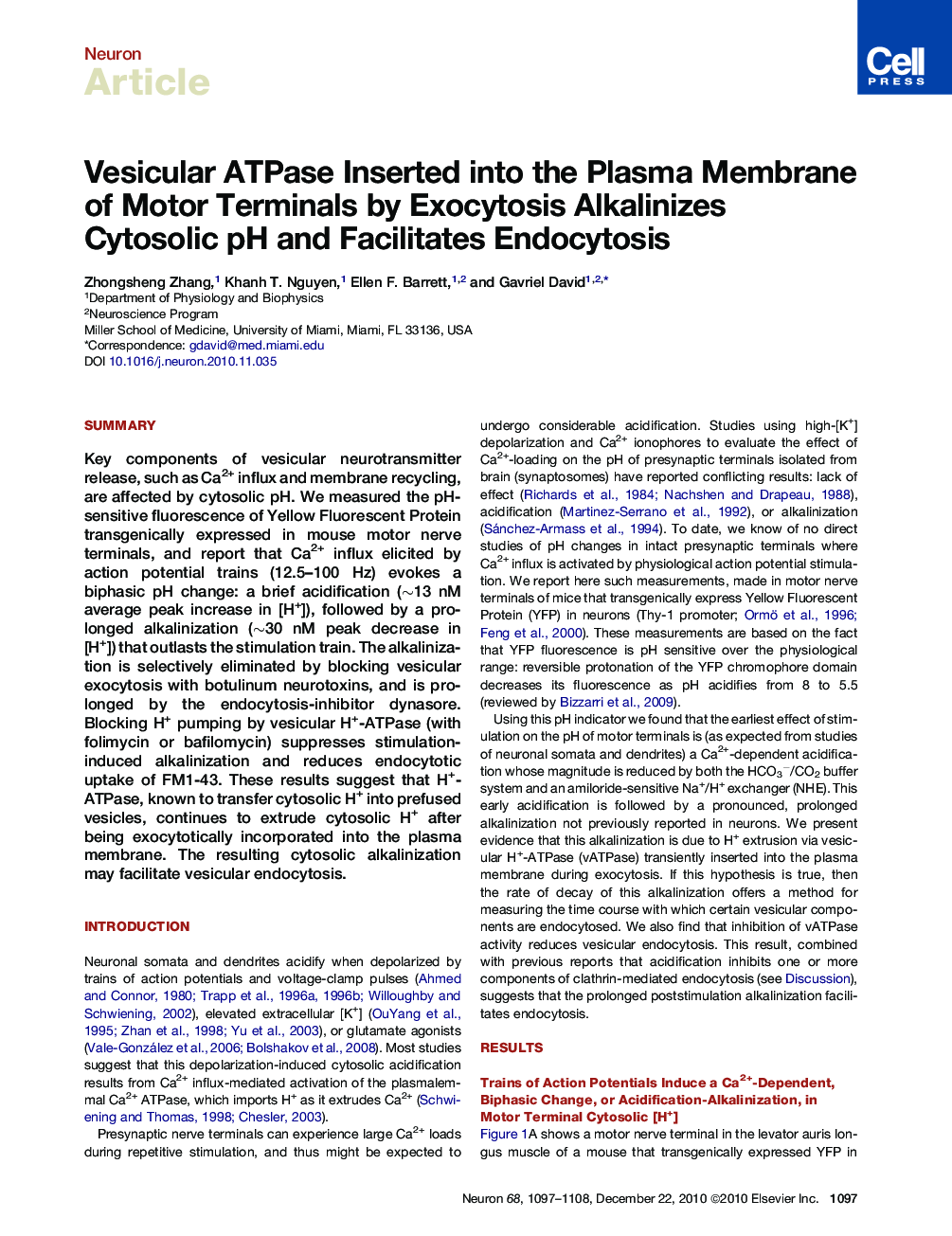| کد مقاله | کد نشریه | سال انتشار | مقاله انگلیسی | نسخه تمام متن |
|---|---|---|---|---|
| 4321859 | 1291658 | 2010 | 12 صفحه PDF | دانلود رایگان |

SummaryKey components of vesicular neurotransmitter release, such as Ca2+ influx and membrane recycling, are affected by cytosolic pH. We measured the pH-sensitive fluorescence of Yellow Fluorescent Protein transgenically expressed in mouse motor nerve terminals, and report that Ca2+ influx elicited by action potential trains (12.5–100 Hz) evokes a biphasic pH change: a brief acidification (∼13 nM average peak increase in [H+]), followed by a prolonged alkalinization (∼30 nM peak decrease in [H+]) that outlasts the stimulation train. The alkalinization is selectively eliminated by blocking vesicular exocytosis with botulinum neurotoxins, and is prolonged by the endocytosis-inhibitor dynasore. Blocking H+ pumping by vesicular H+-ATPase (with folimycin or bafilomycin) suppresses stimulation-induced alkalinization and reduces endocytotic uptake of FM1-43. These results suggest that H+-ATPase, known to transfer cytosolic H+ into prefused vesicles, continues to extrude cytosolic H+ after being exocytotically incorporated into the plasma membrane. The resulting cytosolic alkalinization may facilitate vesicular endocytosis.
► Action potentials evoke an acidification-alkalinization sequence in motor terminals
► Alkalinization requires fusion of synaptic vesicles, and recovers during endocytosis
► Terminals alkalinize by incorporating vesicular H+-ATPase into plasma membrane
► H+ pumping by vesicular H+-ATPase facilitates endocytosis of vesicle membranes
Journal: - Volume 68, Issue 6, 22 December 2010, Pages 1097–1108